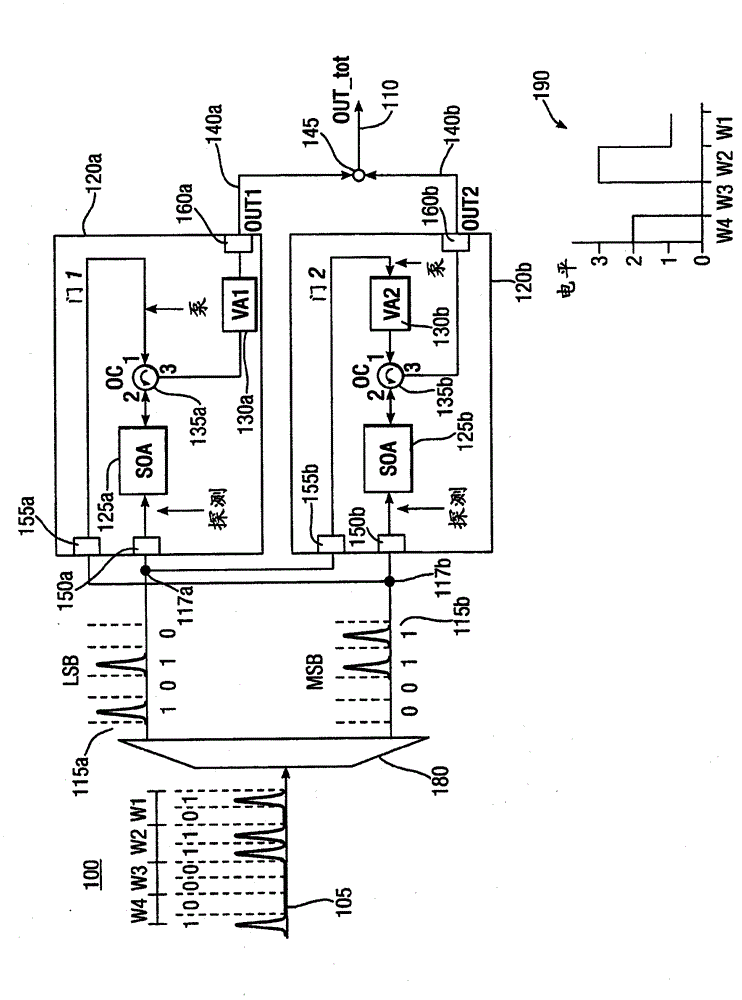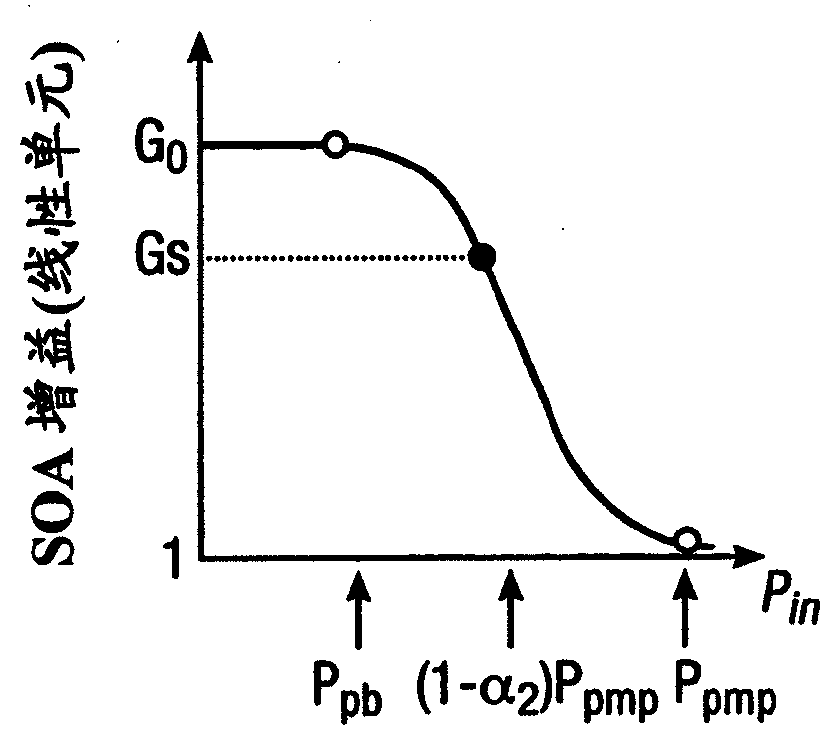Optical Digital-to-Analog Conversion
A digital-to-analog converter, optical technology, used in digital-to-analog conversion. Fields, can solve problems such as non-integrability
- Summary
- Abstract
- Description
- Claims
- Application Information
AI Technical Summary
Problems solved by technology
Method used
Image
Examples
Embodiment Construction
[0020] figure 1 A 2-bit digital-to-analog converter (DAC) is shown, arranged to receive a 2-bit digital optical signal, and to process this 2-bit digital optical signal to generate an analog optical signal. DAC 100 includes two optical processing gates 120 a and 120 b that receive input from serial-to-parallel converter 180 and output to combiner 145 . Optical processing gates, serial-to-parallel converters and combiners are photonic circuits arranged to process incoming optical digital signals 105 into analog optical signals 190 in the optical domain. The optical digital signal comprises a sequence of optical pulses (wl, w2, w3, w4) arranged in 2-bit words. Each 2-bit word is converted by DAC 100 to one of multiple output levels of analog signal 190 . It can be seen that word w1 (01) corresponds to analog output level 1, w2 (11) corresponds to level 3, w3 (00) corresponds to level 0, and w4 corresponds to level 2, where the binary words are represented by Gray Code represe...
PUM
 Login to View More
Login to View More Abstract
Description
Claims
Application Information
 Login to View More
Login to View More - R&D
- Intellectual Property
- Life Sciences
- Materials
- Tech Scout
- Unparalleled Data Quality
- Higher Quality Content
- 60% Fewer Hallucinations
Browse by: Latest US Patents, China's latest patents, Technical Efficacy Thesaurus, Application Domain, Technology Topic, Popular Technical Reports.
© 2025 PatSnap. All rights reserved.Legal|Privacy policy|Modern Slavery Act Transparency Statement|Sitemap|About US| Contact US: help@patsnap.com



